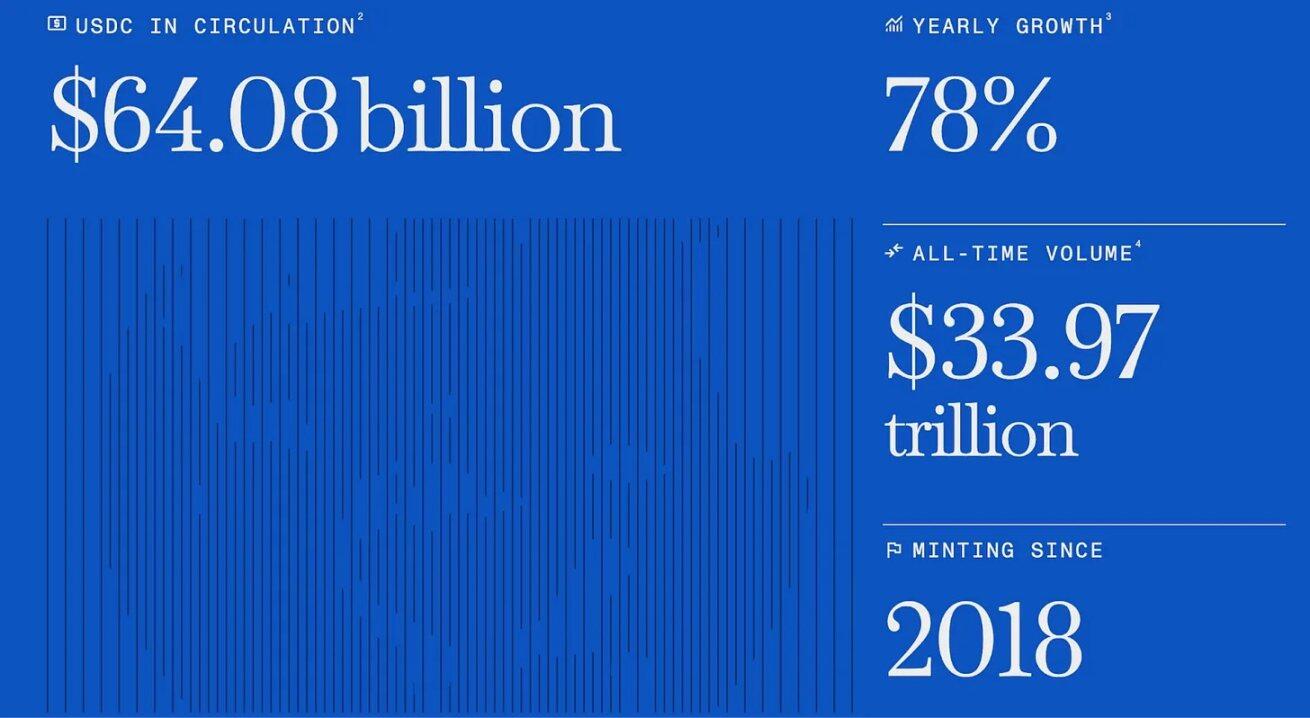Original author: Thejaswini MA
Original translation: Saoirse, Foresight News
“We are in the early stages of a disruptive technology that has the potential to transform the world as profoundly as the internet did.”
Jeremy Allaire has accurately predicted the future three times. The first was in 1990, when most people had never heard of the word "Internet." He saw the transformative potential of the World Wide Web. This insight led to the creation of ColdFusion software, which made him millions.
The second time was in 2002, when he predicted that anyone would be able to distribute video content globally without the need for television networks. This vision led to the creation of Brightcove, which has earned him hundreds of millions of dollars.
The third time, in 2013, he realized that cryptocurrencies could become the cornerstone of an entirely new financial system—a bet that could forever change the way money works.

Allaire, 54, has spent three decades building the invisible infrastructure that underpins the digital world. The USDC stablecoin he founded processes trillions of dollars in transactions annually and has become a bridge between traditional finance and the crypto economy.
But for a man who has made a career of seeing what others haven’t, Allaire never stops building the future.
The decade of internet awakening
In a dorm room at Macalester College in Minnesota, 1990.
Jeremy Allaire's roommate did something almost unbelievable. Working in the university's computer services department, he managed to connect his dorm to the internet. At a time when most people thought "web" was just a spider's web, Allaire was about to get a glimpse into the future.
The moment you log on to the Internet for the first time, everything changes.
“This is going to change the world,” he declared then, and his tone was no casual undergraduate exclamation. By the time he graduated in 1993, the Internet had become his “main passion.”
Consider the historical context: Allaire's internet debut was before Netscape, before Yahoo, and before the term "cyberspace" was even known. He foresaw the next chapter of human civilization.
But the foundation for this moment was laid years ago.
The Allaire family living room in Winona, Minnesota, in 1984.
Thirteen-year-old Jeremy asked his parents for a simple request: to loan him $5,000 to start a baseball card trading business. His father, Jim, a psychologist, and his mother, Barb, a newspaper editor, understood people and information, but they were puzzled by the teenager's willingness to spend so much money reselling cardboard.
While other kids collected cards for fun, Jeremy saw a different approach: he saw market inefficiencies, price trends, and opportunities to buy low and sell high.
In the end, he doubled his money.
In 1993, he had just graduated and his mind was full of the Internet.
Jeremy faced a dilemma: Almost no one understood what he was talking about. The internet? Most businesses had never heard of it. So, he did the logical thing—he started his own company.
Global Internet Horizons was born, providing consulting services to media publishers who wanted to understand this mysterious "network." But consulting services couldn't change the world.
In 1995, a conversation between Jeremy and his brother JJ would either make them rich or leave them penniless.
They started Allaire Corporation with JJ's $18,000 savings, which was almost all they had.
The brothers worked together perfectly: JJ was responsible for programming technology, while Jeremy focused on market demand. It was 1995, before Netscape monopolized the browser market and before companies realized the business opportunities inherent in the Internet.
The introduction of ColdFusion changed everything almost overnight. The software turned static web pages into interactive applications that could connect to databases, manage user accounts, and process transactions.
Suddenly, companies like MySpace, Target, Toys "R" Us, Lockheed Martin, Boeing, and Intel could create dynamic websites without hiring armies of programmers. The software became the foundation of e-commerce, the backbone of content management, and the engine that powered the dot-com boom.

Starting with a team of 12 in Minnesota, they quickly became profitable.
Realizing that the Internet was growing much faster than expected, they partnered with Boston-based Polaris Ventures and secured their first real funding: $2.5 million.
When they tried to move to Silicon Valley, their landlord refused because they were "too small," so they moved to Boston instead. This rejection may have saved them. Boston's tech scene offered them resources and talent without the self-centered culture of Silicon Valley.
Annual revenue soared from just over $1 million in 1996 to approximately $120 million in 2000. The company grew to over 700 employees, with offices across North America, Europe, Asia, and Australia. In January 1999, they went public on the NASDAQ, one of the early web software success stories that proved the internet was more than just hype.
In March 2001, the phone call that tested everything.
Macromedia wants to acquire Allaire Corporation and has offered $360 million.
At 29, Jeremy is about to become very rich.
He agreed, and Jeremy and JJ sold Allaire Corporation to Macromedia, with Jeremy becoming the multimedia giant's CTO and JJ retiring from the tech world to pursue other interests.
Video Revolution
In 2002, as Macromedia's chief technology officer, Jeremy walked into a meeting with an idea that might unsettle his bosses.
He understood the significance of the data before him: Macromedia's Flash technology, the animation, video, and gaming technology that powered early internet multimedia, was installed on 98% of the world's computers, and broadband was becoming widespread. Everything was in place, only the right time was needed.
He proposed Project Vista: a browser-based video capture, upload, and publishing system that would allow anyone to become a streamer and reach a global audience.
Think YouTube, but this was years before Google even heard of the concept of a video platform.
Macromedia executives listened politely, then vetoed the project.
Jeremy had watched his company miss out on the future of media. The company that had brought the world Flash, a core technology for early internet multimedia, had just declined to enter the online video space, missing out on a crucial component of the web.
In February 2003, Jeremy resigned from Macromedia.
His colleagues thought he was crazy. As the CTO of a major tech company, earning a good salary and responsible for important products, why would he give it all up?
Because he saw the future, and Macromedia had no intention of building it.
Jeremy joined General Catalyst as Entrepreneur-in-Residence. For a year, he studied the market and watched as the elements fell into place to prepare for his challenge to the entire television industry. He was simply waiting for the perfect moment.
In 2004, he co-founded Brightcove with the vision of creating an environment for independent video creators to deliver content directly to consumers, bypassing traditional TV networks and channels.
Compared to his first company, Jeremy's strategy changed: instead of bootstrapping with borrowed capital, he decided to "get venture capital immediately and scale quickly." Challenging the television industry required deep pockets and partnerships with major content producers.
The company's mission reflected Jeremy's growing understanding of the democratizing power of internet technology. He was proven right: content creators who couldn't afford television networks suddenly had global distribution; independent filmmakers could reach audiences without having to beg media moguls.
In 2012, Brightcove went public with a valuation of $290 million, and Jeremy held a 7.1% stake.
He successfully built a marketplace that allowed thousands of creators to reach a global audience without having to beg TV networks, movie studios, or media executives, but he stepped down as CEO in 2013 to become chairman as Brightcove conquered the online video landscape.
Why leave when everything is going well? This is the second time. But Jeremy's eyes are already on the next corner.
Monetary Revolution
In 2013, Jeremy Allaire stared at his computer screen again, just as he had 23 years earlier in his Minnesota dorm room.
This time, he was studying something called Bitcoin.
The 2008 financial crisis made him question everything about traditional banking. With Lehman Brothers bankrupt, Bear Stearns disappearing, and the global financial system on the brink of collapse, Jeremy wondered if there was a better way.
When he first encountered Bitcoin, the feeling was familiar, almost déjà vu. "I feel exactly the same way about digital currencies, and Bitcoin in particular," he told Fortune. "We are in the early stages of a disruptive technology that has the potential to transform the world as much as the internet did."
He sees what he calls a "universal money circulation system, just as the HTTP protocol is the basis for information dissemination on the Internet."
In October 2013, Jeremy co-founded Circle with Sean Neville.
Their vision is to help build the world's first global currency, based on the internet and open platforms and standards like Bitcoin.
Accel Partners and other prominent venture capital firms immediately jumped in. Everyone sensed that this wasn’t an incremental improvement to existing financial services.
Jeremy wanted to create a programmable currency that could settle payments nearly instantly, at a fraction of the cost of traditional wire transfers. They weren't looking to improve existing financial services; they were looking to create an entirely new category that could operate globally without relying on the correspondent banking relationships that made international transfers slow and expensive.
But Circle’s early attempts at consumer-facing Bitcoin applications and trading platforms were less than successful. The breakthrough came when Jeremy realized the problem wasn’t the technology, but volatility.
2018, the birth of USDC
In partnership with Coinbase through the Centre Consortium, Circle launched USD Coin (USDC), a stablecoin backed by actual US dollar reserves, with each USDC token worth exactly $1.
Now, businesses can enjoy the benefits of cryptocurrencies, including instant global transfers, 24/7 availability, and programmable smart contracts, without having to endure Bitcoin’s wild price fluctuations.
The regulatory path Jeremy chose was fraught with risk. Unlike many crypto companies operating in a gray area, Circle worked directly with financial regulators to ensure USDC met the highest standards of transparency and compliance.
This decision sometimes puts Circle at a competitive disadvantage: other stablecoin issuers, less concerned with compliance, move faster. But Jeremy is playing a longer game.
By 2025, USDC has become the second-largest stablecoin by market capitalization, with over $64 billion in circulation. Businesses use it for international payments, developers build financial applications on top of it, and individuals use it for instant cross-border remittances.

Jeremy’s success was achieved by overcoming what industry observers call “a nearly impossible distribution challenge.” Unlike Tether, which gained widespread adoption through early partnerships with Asian crypto exchanges, Circle had to build a distribution network from scratch.
Circle’s response was to establish a strategic partnership with Coinbase: Circle would pay 50% of its net interest income to Coinbase in exchange for distribution rights on its network.
Is it expensive? Yes. Is it effective? Absolutely.
USDC has become the main alternative to Tether in Western markets.
Crisis test
Dubai, March 10, 2023. It was supposed to be the weekend of Jeremy's son's 13th birthday.
At 2 a.m. local time, the phones started ringing.
Silicon Valley Bank is facing bankruptcy, and Circle has $3.3 billion in USDC reserves in this bank.
Within hours, USDC decoupled from its peg and plummeted to $0.87. Traders panicked as it seemed the stablecoin Jeremy had spent five years building could become virtually worthless overnight.
Jeremy assembled a virtual war room on Google Meet, working through an eight-hour time difference with the East Coast team. His son's birthday party was forgotten; it was about protecting the funds of the millions of people who trusted Circle.
Option A: Immediately transfer funds to another bank.
Option B: Rely on deposit insurance from the Federal Deposit Insurance Corporation (FDIC) to cover any losses.
Option C: Negotiate with a company willing to purchase Circle’s SVB assets at a discount.
With the entire crypto world watching, Jeremy made a personal commitment: if the Silicon Valley Bank deposits could not be recovered, Circle would "cover the entire funding gap."
This crisis tested all the cornerstones on which Jeremy built his reputation: transparency, accountability, and a determination to do the right thing when times are hard.
Circle published a detailed blog post explaining exactly what happened and the steps they are taking to protect customer assets.
Three days later, federal regulators guaranteed Silicon Valley Bank's deposits.
USDC restored its peg to the US dollar and the crisis ended.
Jeremy demonstrated that Circle could withstand severe external shocks while maintaining customer trust. His approach of collaborating with regulators, rather than confronting them, paid off when it mattered most.
Throughout Circle's development, Jeremy positioned himself as the cryptocurrency space's most prominent advocate for a clear regulatory framework. Many crypto entrepreneurs disagreed, preferring minimal regulation. But Jeremy testified before Congress, participated in regulatory working groups, and worked with global policymakers to shape the regulatory framework for cryptocurrency.
In 2024, Circle became the first major global stablecoin issuer to comply with the EU's Crypto Asset Market Regulation.
The strategy worked.
Jeremy then decided to take Circle public.
The road to going public wasn't smooth. The company's first attempt at a SPAC merger in 2021 wasn't approved by the SEC. Yet, Jeremy persevered.
In July 2025, Circle was successfully listed on the New York Stock Exchange.
The IPO documents revealed a company with substantial revenue, clear regulatory compliance, and substantial business scale. Circle's public debut valuation exceeded $4.6 billion. Jeremy's decade-long bet on stablecoins paid off spectacularly.
Today, Circle trades under the ticker symbol CRCL with a market capitalization exceeding $40 billion. Since its July IPO, the stock price has risen more than 430%, making it one of the most successful public market debuts in crypto history.
Jeremy believes that stablecoins are approaching their “iPhone moment”: the moment when the technology becomes practical and easy to use, thus achieving mass adoption.
Genius Moments
On July 18, 2025, President Donald Trump signed a bill that vindicated Jeremy Allaire's decade-long efforts. The GENIUS Act became the first comprehensive stablecoin regulation in the United States. Jeremy's commitment to compliance has positioned USDC in an excellent position.
The GENIUS Act does three things that Jeremy has been advocating for years: first, it confirms that stablecoins are not securities, eliminating the regulatory uncertainty that has plagued the industry; second, it requires stablecoins to be fully backed by safe assets such as government bonds, solving the reserve transparency problem; and third, it brings stablecoin issuers into the same compliance framework as traditional banks.
Jeremy spent years building the infrastructure, and now governments are scrambling to adapt to a world where programmable money is inevitable.
The prophet who saw the potential of the web in 1990, foresaw the democratization of video in 2002, and discerned the cryptocurrency revolution in 2013 has just seen his third prediction redefine money itself.
In an industry obsessed with moving fast and breaking things, he proves that the most transformative changes often come from patience, persistence, and the wisdom to see where others miss.
Three predictions, three industries that have left a lasting impact. If his track record is any indication, even more significant changes lie ahead.
- 核心观点:Jeremy Allaire 三次精准预判技术变革。
- 关键要素:
- 1990年预见互联网潜力。
- 2002年预测视频大众化。
- 2013年洞察加密货币革命。
- 市场影响:推动加密金融合规化发展。
- 时效性标注:长期影响。



